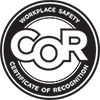Asbestos FAQ's
If your home or building was built before 1987 materials should be tested for asbestos.
You can’t tell by just looking at it. The material should be analysied using a specialized microscope. Do not attempt to take a sample yourself – a laboratory or an asbestos consultant can give you advise on how correctly take and send a sample.
No, the materials are not dangerous if undisturbed and sealed.
The safest way to manage any health risks is to wipe up any dust with a damp cloth. Put the cloths in two plastic bags that are tied up individually and dispose of properly.
The damaged material/or area should be sealed off as to not to release more fibres until a further assessment can be made.
Mould FAQ's
Mould is virtually everywhere and can be indoors and outdoors. Mould is mainly found indoors in warm and humid conditions such as basements and showers. Outdoors mould can be found in decaying vegetation.
It is not necessary to identify the species of mould growing. If you are susceptible to mould there is a potential health risk therefore no matter what type of mould it is you should arrange to have it removed.
If your property owner, landlord or builder is not responsive to your concerns you can contact your local board of health or housing authority.
First consult your doctor and determine the appropriate medical action to take.
Lead Paint FAQ's
Paints made before 1950 contained large amounts of lead. If built after 1980 there is little concern about lead levels in the paint.
Lead-based paint does not present a health hazard as long as it is not chipping or flaking. Removing it can often result in a more immediate health hazard than simply leaving the painted area intact.
For paint on doors and trims either remove professionally or outside in a well-ventilated area. Chemical strippers may be the best solution.


